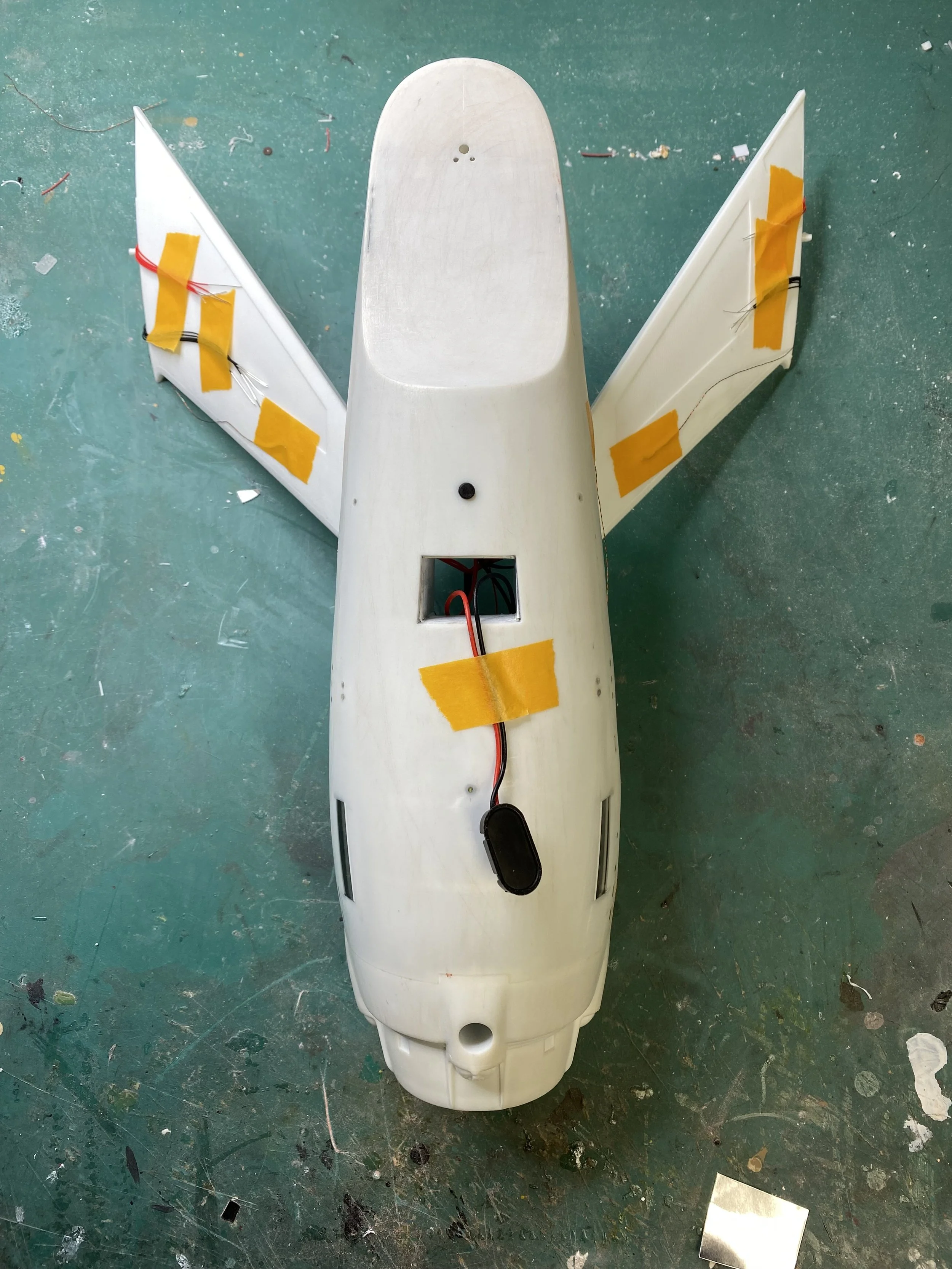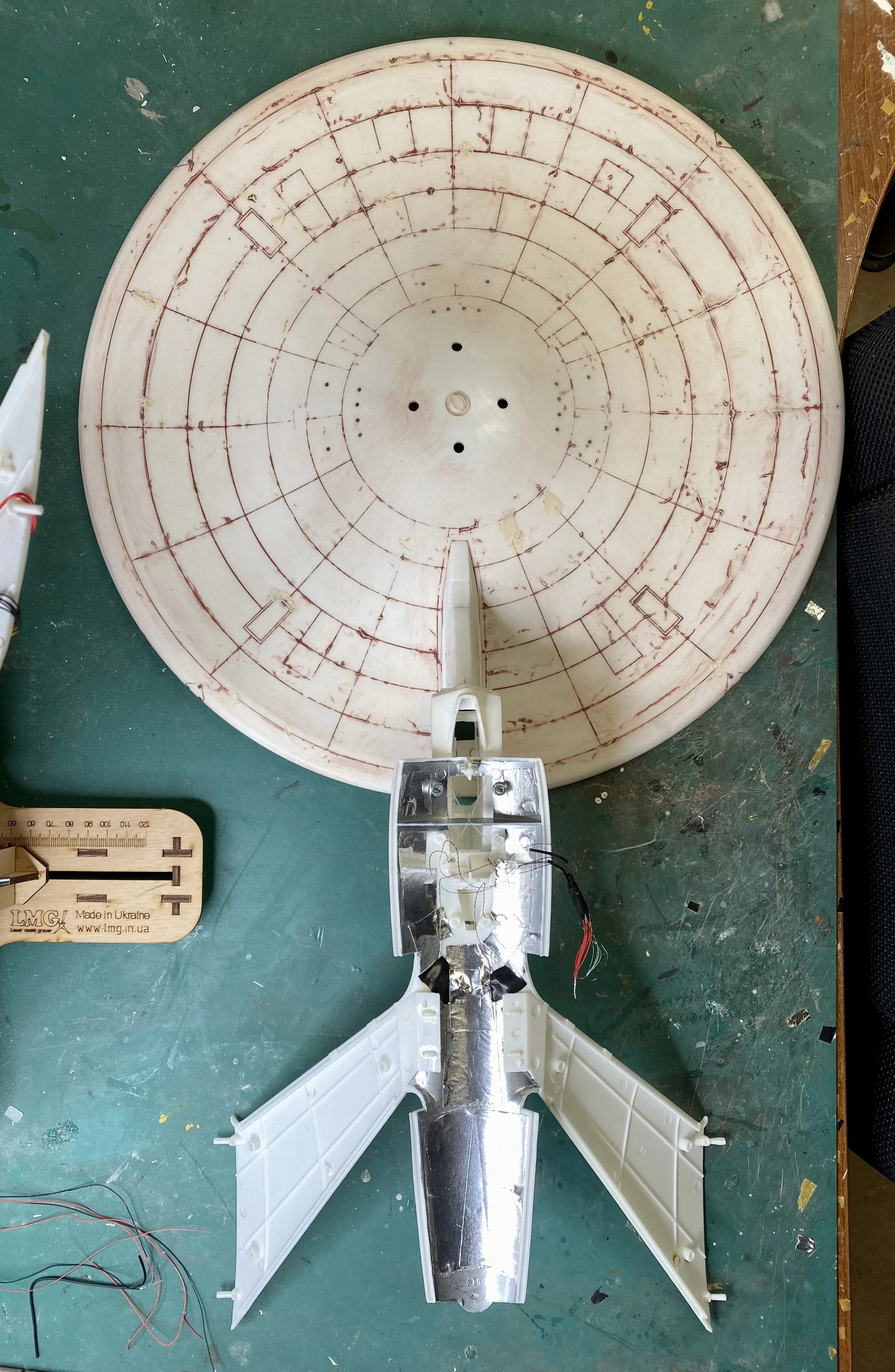Electrical Work
The lower (secondary) hull of the Big E has been wired up, which is a mix of fun and nerve-wracking. The quality of the products from Evan Designs is such that the process is relatively easy. Any issues that arise are due to my poor planning; I tend to have a good idea what I want to accomplish, then charge forward. Of course, I do test circuits and fit before buttoning things up, but it’s still all about fumbling forward in a general direction.
As for circuitry, a replaceable 9-volt battery, enclosed in the secondary hull, can power up to 50 pico-scale LEDs. That appears to be more than enough for what I want to accomplish. With that, I have the following plan in place, one that gets modified a bit as I go along (note I am not using the film as reference):
Secondary hull: 18 LEDs (8 cool white for general illumination, 8 warm-white for spot beams, 1 for the main deflector dish, and 1 strobe)
Primary hull: 20 LEDs (8 cool-white for general illumination, 3 warm-white for spot beams, 2 red + 2 green + 2 yellow for navigation lights, 2 orange LEDs for impulse engines, and 1 strobe)
Engine nacelles: 12 total LEDs, 6 for each nacelle (3 cool white for general illumination, 2 warm-white for spot beams, and 1 strobe)
Dorsal: None - general illumination provided by bleed light from elsewhere
I’m not lighting up the torpedo tubes or thrusters, as I don’t understand why these would be illuminated. The navigation lights won’t flash either, as these tend to be steady on aircraft and ships. The lighting seen through the portholes will be varied, some even blocked a bit, to reflect the idea that there are individual rooms, each with different light levels.


